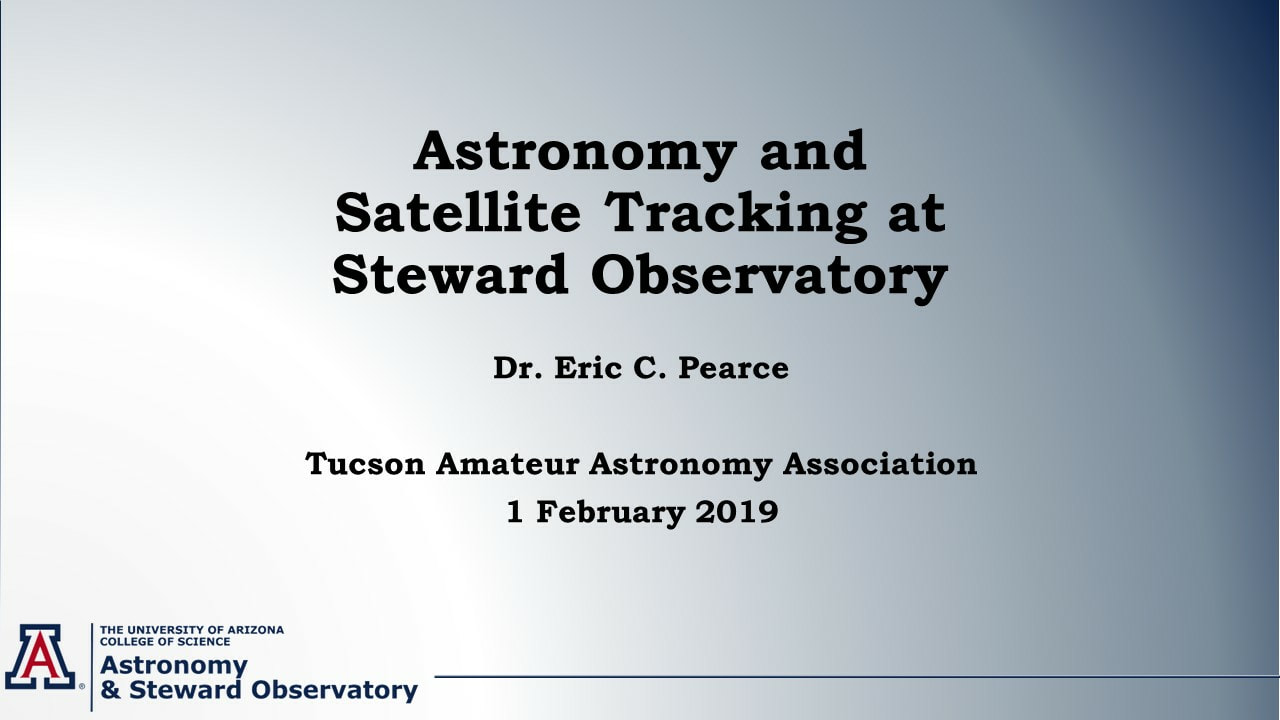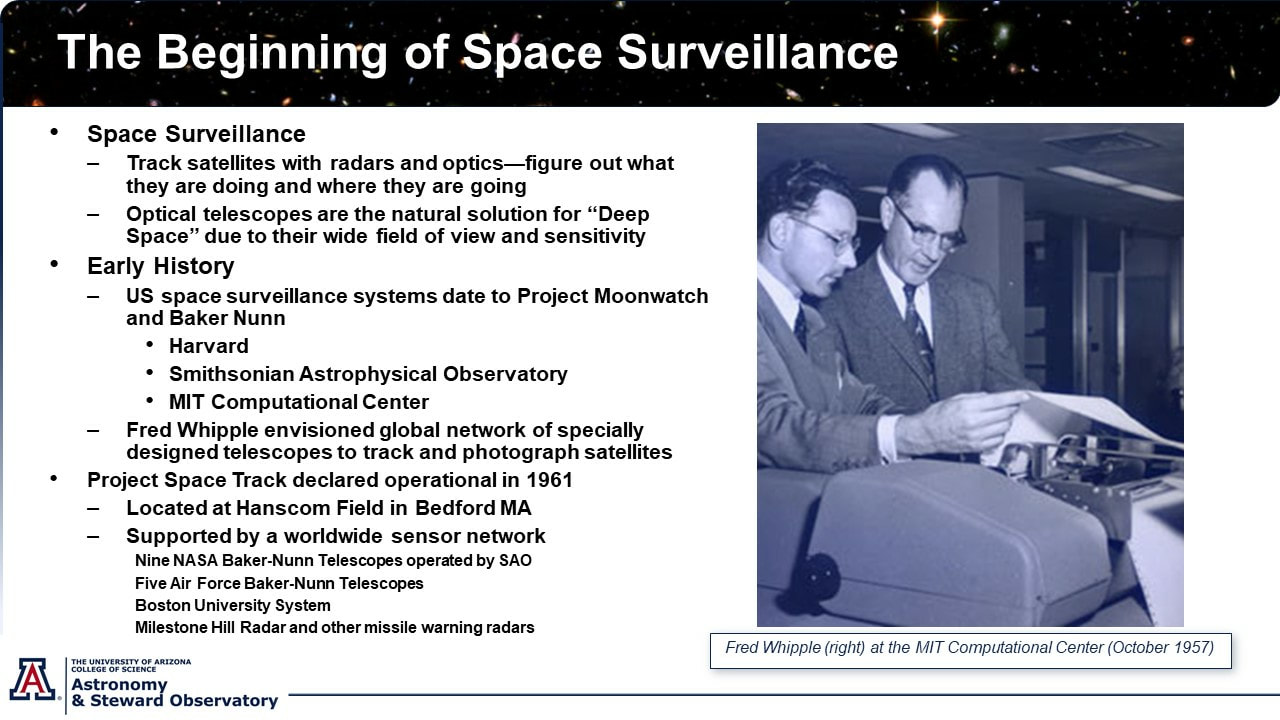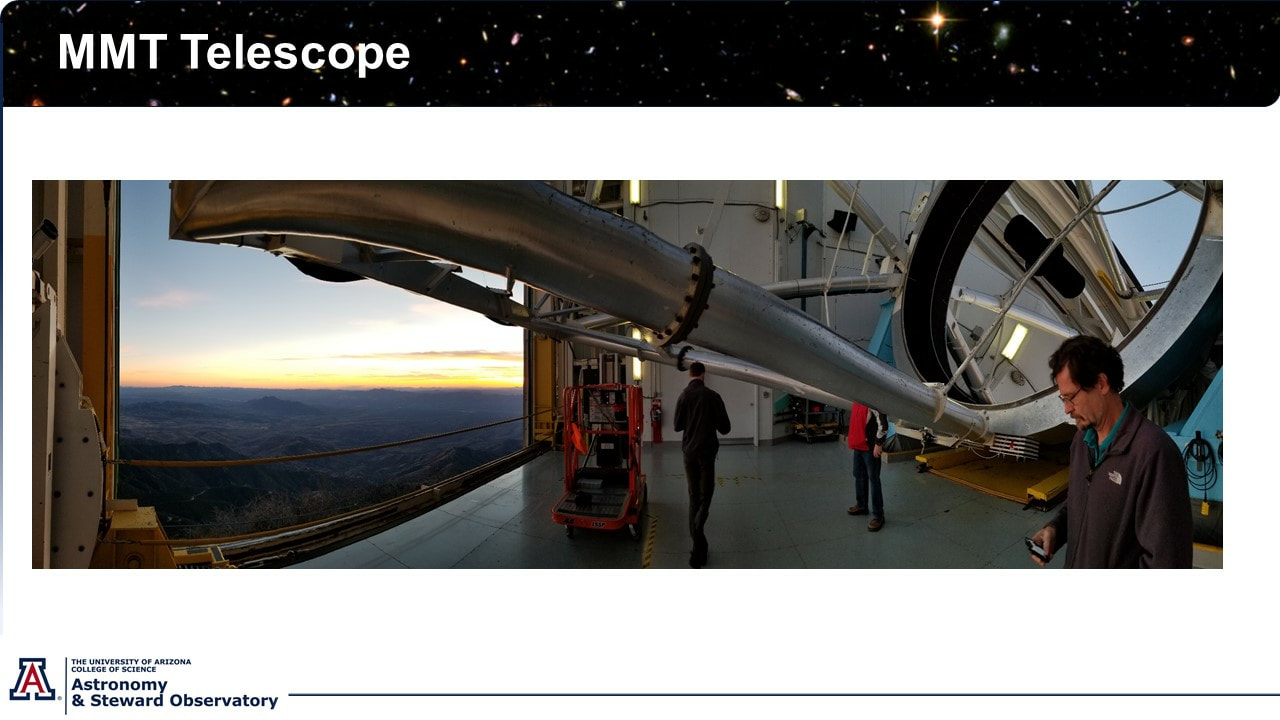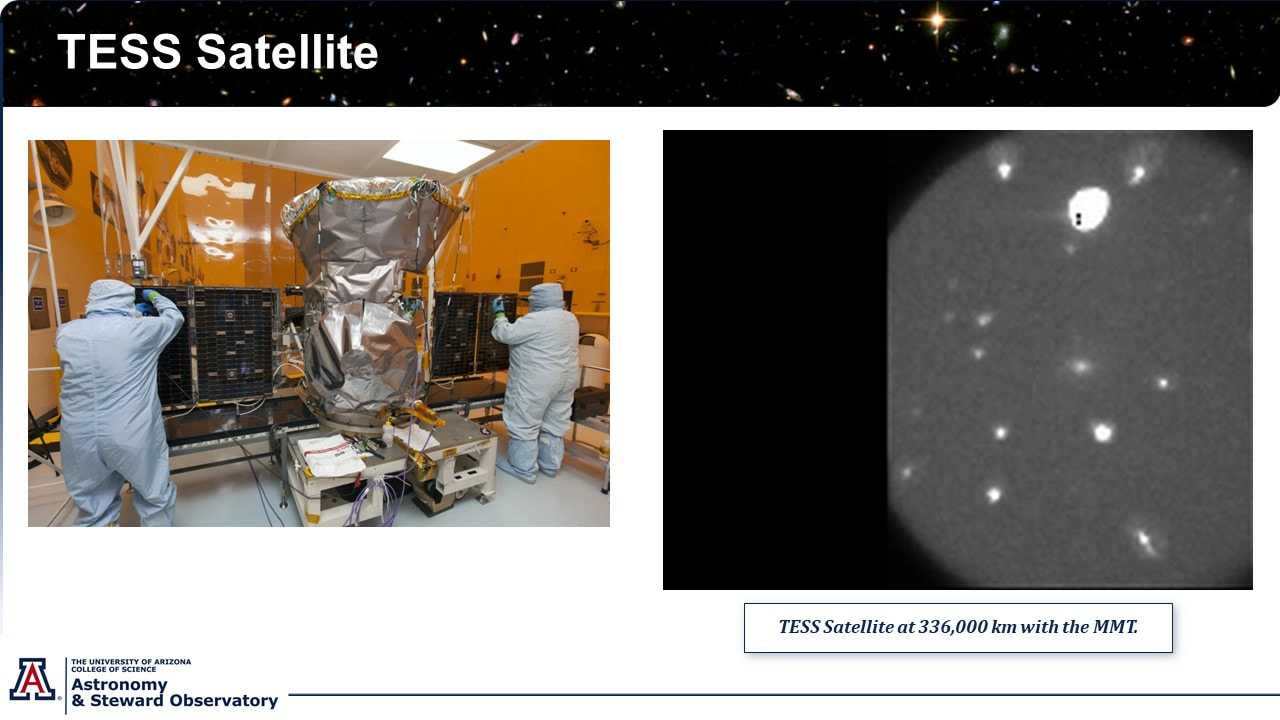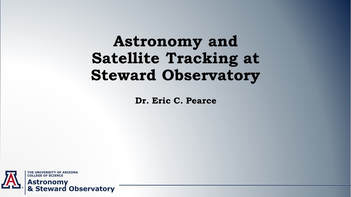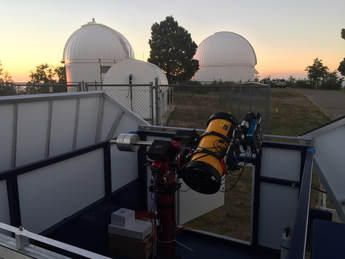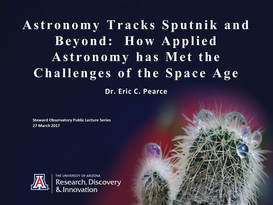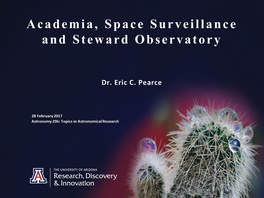Public SSA Lectures
|
In this update of Dr. Pearce's "Astronomy and Satellite Tracking at Steward Observatory", recent adventures and results of observing satellites and the Crab Pulsar with the MMT Telescope are included. Using the MMT, the team tracked the Transiting Exoplanet Survey Satellite (TESS), at a range of over 336,000 km (over 9 times farther way than a typical geosynchronous satellite). Using one of the high-speed EM-CCD cameras from the Chimera Photometer, the team observed the Crab Pulsar, creating a unique video of the 29.94 Hz beacon just in time to for the recent celebration at the Steward Observatory of the 50th Anniversary of the first observations of the optical pulse.
|
|
Our nation uses a worldwide network of telescopes and radar systems to keep track of nearly 5000 satellites and 14000 other manmade objects currently in orbit around the Earth. Our national ability to discovery, track, characterize, and maintain custody of these objects is essential to the safe utilization of space for both civil and military purposes. From a day-to-day standpoint, this mission is called “Space Situational Awareness”, or “SSA”, and is the primary responsibility of the U.S. Air Force Space Command.
Academia played an essential role in the early development of our national capabilities. In the mid-1950s, driven by the imminent launch of the first Russian satellite Sputnik, there was an urgent need to rapidly develop a basic capability to detect, track, and determine orbits of the first satellites[Sturdevart 2008, Grometstien 2011]. Early development of our ground-based satellite tracking systems and techniques were led by a coalition of academic and Government organizations to meet the emerging needs to detect, track, and catalog objects in earth orbit. Fred Whipple’s vision of a world-wide network of wide field of view telescopes was foundational. This vision ultimately led to development and deployment of a unique astrographic telescope, the Baker-Nunn, to 15 sites worldwide, and the development of the first data processing center to turn optical observations into orbits and future predictions of Sputnik and the satellites that followed. Other countries, including Russia and the Europeans also developed advanced film based astrographs for satellite tracking. Today, academia and the University of Arizona is re-engaging with the SSA community to address the future challenges of maintaining our awareness of space and to educate a new cadre of SSA professionals. One of my particular areas of research is revisiting the astrograph. Today, modern commercially available telescopes and scientific grade cameras allow small telescopes with very wide fields of view to be used to support satellite tracking, cataloging and characterization. Our prototype astrograph, “Pomenis”, is a trailer mounted 7” telescope that can rapidly search the sky, tracking all the satellites visible over the entire equatorial region. Pomenis is currently up at Kitt Peak making measurements of the night sky brightness to support studies of light pollution at our observatories. Other advances in sensors, such as the electron-multiplying CCD camera allow high speed characterization of satellites using our larger telescope at Mt. Lemmon and has renewed exploration of rapid time scale astronomical objects such as accreting x-ray binary black holes. |
|
Astronomy Tracks Sputnik and Beyond: A retrospective discussion of the beginning of space situational awareness with the launch of Sputnik and the US preparations with the development of optical systems and observers to meet that challenge. Presented by Eric Pearce at the Steward Observatory Public Lecture Series, 27 March 2018.
|
|
Academia, Space Surveillance, and Steward Observatory: An introductory lecture to the UA Astronomy 296 Topics in Astronomical Research class, 28 February 2017. Topics include an overview of the mission, history of US optical space surveillance systems, (Baker Nunn, GEODSS, SST), rationale for optical tracking, and current research at Steward Observatory.
|
